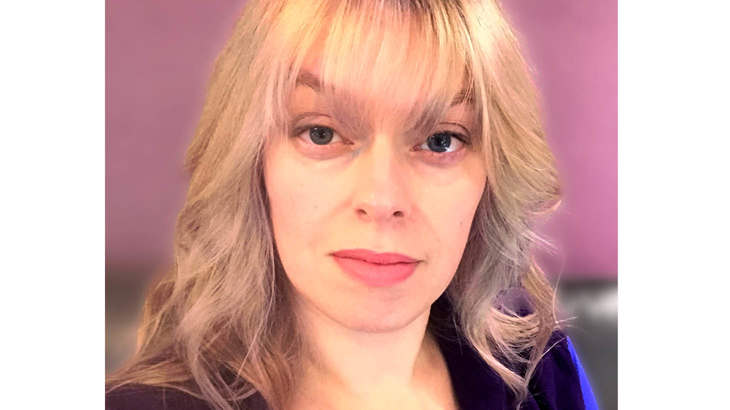41% of disabled people often experience problems walking or wheeling to their destination due to the accessibility of the environment. Rachael, who lives in Norwich, explains some of the challenges faced by visually impaired people in accessing and enjoying local spaces on foot. As a participant in our Disabled Citizens’ Inquiry, she also shares her views on what needs to change to make walking safer for everyone.

Photo supplied by Rachael.
Walking with guide dog Ajay is our guest blogger Rachael’s favourite way to get around her home city of Norwich. She told us:
“I’m registered blind and have been a guide dog owner for 10 years.
“I have no sight in my left eye and no central vision in my right eye.
“What sight I do have only works very close up.
“I get around with the help of my guide dog Ajay, who’s been with me for two years.
“Ajay is a big, laid-back, yellow Labrador Retriever.
“He’s a lovely boy and I’m so lucky to have him.”
Challenges on local journeys
“I prefer to walk to places, rather than catch a bus, as I like to be self-reliant.
“It’s always great to be out with Ajay, though it can be hard work sometimes.
“Although your dog is your eyes, you’re the one who’s in control, so you have to know what you’re doing.
“I can list so many physical things that are difficult to navigate on the journeys I make every day:
- cars parked on pavements
- overgrown verges
- crossings without tactile paving
- pavements without dropped kerbs
- dropped kerbs that don’t line up from one side of the road to the other.
“If you’re visually impaired, there’s a myriad of issues to think about before you even start worrying about other people’s behaviour and attitudes towards you.”
Feeling vulnerable in shared-use spaces
“I find shared-use spaces difficult.
“People coming from behind who are riding cycles and e-scooters can’t always see the guide dog in front and pull in too close.
“This frightens me and Ajay.
“And if a guide dog loses their confidence, they can’t keep you safe.
“Even if you don’t get hit, a near miss can still have a negative impact.
“It leaves me feeling vulnerable.”
People need to change
“We need to build better understanding and awareness of the needs of disabled people.
“I’m a seasoned campaigner on disability and inclusive design.
"Most of the people I talk to do listen and care.
“But they just don’t understand what it’s like to be visually impaired.
“They don’t understand why blocking a pavement or a dropped kerb with their car is such a big problem.
“Or why guide dogs need space to do their work, so you can’t just cut straight in front of them.
“A lot of the time it’s assumed that if somewhere is scary or dangerous, you’ll get someone sighted to go with you.
“I’m a grown adult, not five years old, and I might not have access to a person. And frankly, why should I?”
Places need to change
“Inclusivity and safety should be baked into infrastructure design from the get-go.
“How can it be expensive to make things safe for people?
“I think it’s often more expensive not to.
“We need to be caring about each other, not making people fearful about moving around their own neighbourhoods or putting them in danger.”





